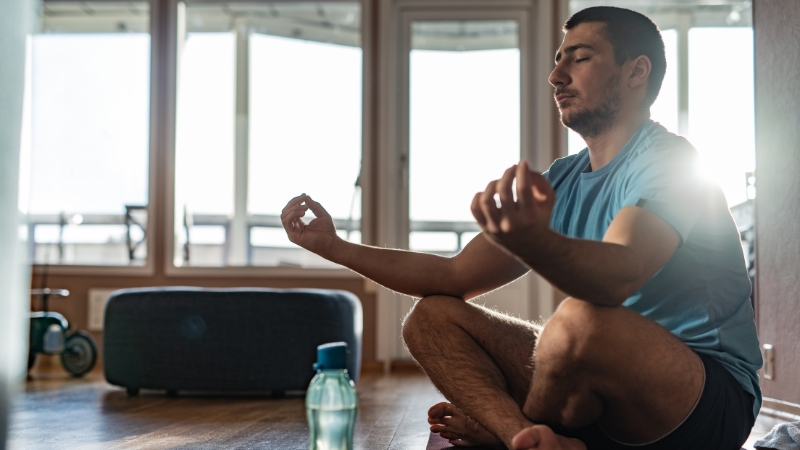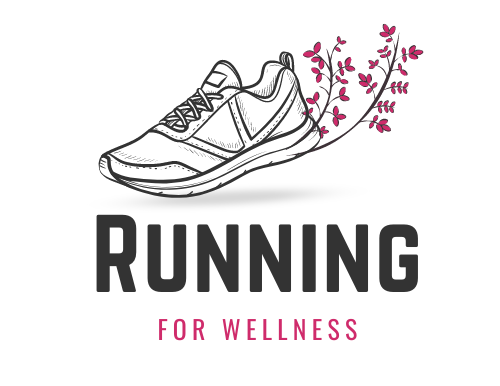Hitting a fitness goal – whether that means shedding a few pounds, gaining lean muscle, or simply feeling healthier – takes more than just willpower. One of the biggest roadblocks isn’t the workout itself but those persistent cravings that sneak in between meals or after a long day.
They can pull you toward the cookie jar, the vending machine, or the late-night drive-thru faster than you’d like to admit.
Cravings are normal. They’re your body and brain sending signals that don’t always align with your goals.
Learning how to manage them without feeling deprived is key to long-term success. Let’s break down practical, evidence-backed strategies that make staying on track feel achievable.
1. Stay Hydrated

Dehydration often masquerades as hunger. A large glass of water – around 16 ounces – can help you determine if your craving is real or just thirst. Wait about 15 minutes after drinking water to see if the urge fades.
2. Eat Enough Protein
Protein helps you feel full longer and prevents the blood sugar spikes and crashes that lead to cravings.
Research cited by Healthline shows that boosting protein intake to around 25% of your daily calories can cut cravings by up to 60% and reduce nighttime snacking by half.
Easy ways to include more protein:
3. Eat Regularly to Avoid Extreme Hunger
Skipping meals might seem like a shortcut to fewer calories, but it often backfires. Extreme hunger can make cravings for calorie-dense foods almost irresistible.
Aim to eat balanced meals and snacks every few hours. A satisfying lunch might include grilled chicken, quinoa, and roasted vegetables.
Keep snacks like apple slices with almond butter or carrot sticks with hummus ready to avoid a late-afternoon sugar hunt.
4. Choose Healthy Snack Alternatives
You don’t have to ignore cravings entirely; sometimes, a smarter swap does the trick.
Examples of Healthy Swaps
- Chips → Air-popped popcorn or roasted chickpeas
- Ice cream → Frozen Greek yogurt with fruit
- Candy → Dark chocolate (70% cocoa or higher) or dried fruit
- Salty nuts → Unsalted walnuts or lightly salted cashews
Stock your pantry and fridge with options that satisfy the craving without derailing your goals.
For those craving the ritual of smoking or vaping, consider a non-nicotine, fruit-based alternative like those offered by blakksmoke.com to satisfy the urge without harmful substances.
5. Manage Stress

Stress is a major craving trigger, often sending you straight toward comfort foods. A 2015 study linked chronic stress to higher body mass index due to emotional eating.
Build Daily Stress-Relief Habits
Even a 45-minute morning walk, as WebMD highlights, can curb cravings and lift your mood.
6. Get Adequate Sleep
Poor sleep disrupts hunger hormones like ghrelin and leptin, making you hungrier and more prone to craving junk food. Studies suggest that insufficient sleep can raise obesity risk by over 50%.
Tips for Better Sleep
A solid 7–8 hours of sleep can make cravings far easier to manage.
7. Practice Mindful Eating
Eating slowly and paying attention to each bite helps you notice when you’re truly full. Mindful eating has been shown to reduce binge episodes and overall food intake.
Simple Ways to Eat Mindfully
8. Distract Yourself
Most cravings peak and fade in a few minutes. Instead of acting on impulse, distract yourself until the urge passes.
Quick Distractions
Sometimes, just breaking the pattern is enough to let the craving pass.
9. Control Your Environment
@lainiecooks don’t knock it til you try it #snacks #grams #healthysnacks #skinfood ♬ original sound – Lainiecooks
Your surroundings play a big role in what you eat. If you keep cookies or chips at home, chances are you’ll reach for them.
Environment Hacks
Small environmental changes make the healthier choice the easier choice.
10. Exercise Regularly
Regular movement benefits more than your waistline. Physical activity improves mood, lowers stress, and can help curb cravings.
A brisk 45-minute walk can significantly reduce the urge to snack. Even shorter bursts of movement – like climbing stairs or stretching – can provide a mental reset when cravings strike.
Choose activities you enjoy, whether that’s cycling, dancing, or swimming, so exercise becomes a natural part of your routine.
Why Cravings Happen
Cravings are intense urges for specific foods, often high in sugar, fat, or salt. They can be triggered by more than just hunger. Common causes include:
Recognizing what sets off your cravings is the first step toward managing them effectively.
Sticking to Your Fitness Goals

Managing cravings is essential, but it’s just one piece of staying consistent with your health and fitness journey.
1. Set Realistic and Flexible Goals
Rigid diets often backfire. Allowing yourself small indulgences in moderation can keep you motivated. A single serving of your favorite dessert or a piece of dark chocolate can satisfy without undoing your progress.
2. Plan Your Meals
Meal planning eliminates impulsive choices that often lead to giving in to cravings. Prepare balanced meals with protein, healthy fats, and fiber-rich carbs.
Example Weekly Prep
Having meals ready makes it easier to stay aligned with your goals.
3. Track Progress Sensibly

Monitoring your habits can highlight patterns and help you adjust without becoming obsessive. A food journal or app can show if certain times of day or stressors trigger cravings.
If tracking starts to feel overwhelming, simplify it or seek guidance from a dietitian to keep the focus healthy.
4. Seek Support
Accountability makes a difference. Share your goals with friends or family, or join a supportive group.
If emotional eating or frequent cravings feel unmanageable, consider working with a therapist or registered dietitian for tailored strategies.
Additional Tips for Success
Common Craving Triggers and Solutions
Trigger
Description
Solution
Stress
Raises cortisol, driving cravings for high-fat/sugar
Meditation, yoga, or a 45-minute walk
Lack of Sleep
Disrupts hunger hormones and increases appetite
Sleep 7+ hours nightly with a consistent routine
Dehydration
Often mistaken for hunger
Drink 16 oz of water and wait 15 minutes
Boredom
Leads to mindless snacking
Engage in a hobby, walk, or call a friend
Extreme Hunger
Triggered by skipping meals
Eat balanced meals and snacks every few hours
Emotional Eating
Triggered by anxiety or loneliness
Practice mindful eating or seek emotional support
When to Seek Professional Help
If cravings feel uncontrollable or emotional eating becomes a pattern, reach out for professional guidance.
Dietitians and therapists can create personalized plans that address the root causes and help you stay consistent without feeling restricted.
Summary
🚫🍟 Top 3 Strategies for Controlling Cravings 🥦👊
Cravings sabotaging your fitness goals? Try these effective strategies to regain control.#mypt #cravingcontrol #nutritiontips #healthyeating #mindfuleating #fitnesstips #cravingssolved #nutritionadvice #balanceddiet #pt pic.twitter.com/Nr6DUBJOvP
— MyPT (@mypersonaltrai4) December 22, 2023
Cravings don’t have to derail your progress. By staying hydrated, eating enough protein, managing stress, and building supportive routines like mindful eating and regular exercise, you can take control.
Combine these strategies with flexible goals, meal planning, and a solid support system, and your fitness journey becomes far more sustainable.
With consistency and the right tools, every craving becomes manageable, and every goal feels closer than ever.
Related Posts:
- Top 400 Hilarious Gym Quotes to Keep You Motivated
- How Long Does It Take to Train for a Half Marathon?
- Half Marathon Training Plan for Beginners - Simple…
- 25 Simple Running Motivation Tips To Get You Moving
- How Far Is a Half Marathon? Everything You Need to Know
- 6 Best Running Playlists Music for Every Pace and Mood







